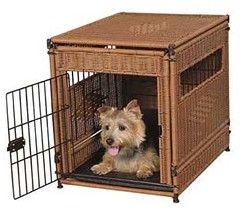If you’ve been looking for methods on how to confidently train your dog to stay inside a crate, you’ve come to the right place! Crate training is an important aspect of pet care, from providing a safe and sheltered space for them to call their own to establishing basic obedience guidelines. With the right tools and techniques, you can have your pooch happily content inside a crate in no time. Now, having said that, it’s important to keep in mind that crate training your dog is not a one-time thing. It’s an ongoing process that requires patience and perseverance. But if you’re willing to put in the time and effort, you’ll find the rewards to be priceless.
Setting up the Crate
Before you can even start training your pooch to stay inside the crate, you must first set up the crate properly. This includes choosing the right size and type of crate for your pup, as well as considering the materials it’s made of. Too big of a space can make them feel insecure, while too small of a space can make them feel trapped. Additionally, the material of the crate should be sturdy and durable, preferably those with steel bars as opposed to those with plastic. To make the crate as comfortable as possible, add a bed or cushion to the bottom, and a special toy or treat inside. Once you’ve settled on the right crate for your pup, the next step is to get it in the right place. You want to make sure it’s in an area of the house that’s easy to access, and close enough to family activity so your dog doesn’t feel lonely. Additionally, aim to keep the crate away from drafts and direct sunlight, and in a relatively quiet space. Lastly, if you have multiple pets, try to make sure that the crate is in a place where your pup can’t be harassed by other animals.

Introducing the Crate
Now that the crate is in the right place, it’s time to introduce your pup to their new space. Depending on your pup’s personality and age, the process of introducing them to the crate can vary. For younger pups, start by showing them the crate and praising them for coming near it. This will help them associate the crate with positive emotions. For older pups, you may need to take a different approach. If they’re fearful or anxious, start by just leaving the crate near a familiar area in the house, like the living room, and allowing them to explore it on their own. When your pup is comfortable enough to go inside the crate, you can start to introduce treats and toys. Before doing this, make sure to remove any toys or treats they already have in the crate. This will give them a positive impression of the crate and make them more likely to go in. You can also try to feed them their meals in the crate. This will help them associate the crate with meals, which can be an effective incentive. Once they’re comfortable going inside the crate and eating inside, it’s time to start the actual crate training. With the right set up and introduction, you can easily train your dog to be comfortable in a crate. All it takes is patience, consistency, and repetition.
Citations:
https://vcahospitals.com/know-your-pet/crate-training-your-dog—an-overview
https://www.paws.org/resources/how-to-crate-train-your-dog/
https://www.paws.org/resources/the-benefits-of-crate-training/
 wagwagtail "only love can make your dog wag her tail"
wagwagtail "only love can make your dog wag her tail"
